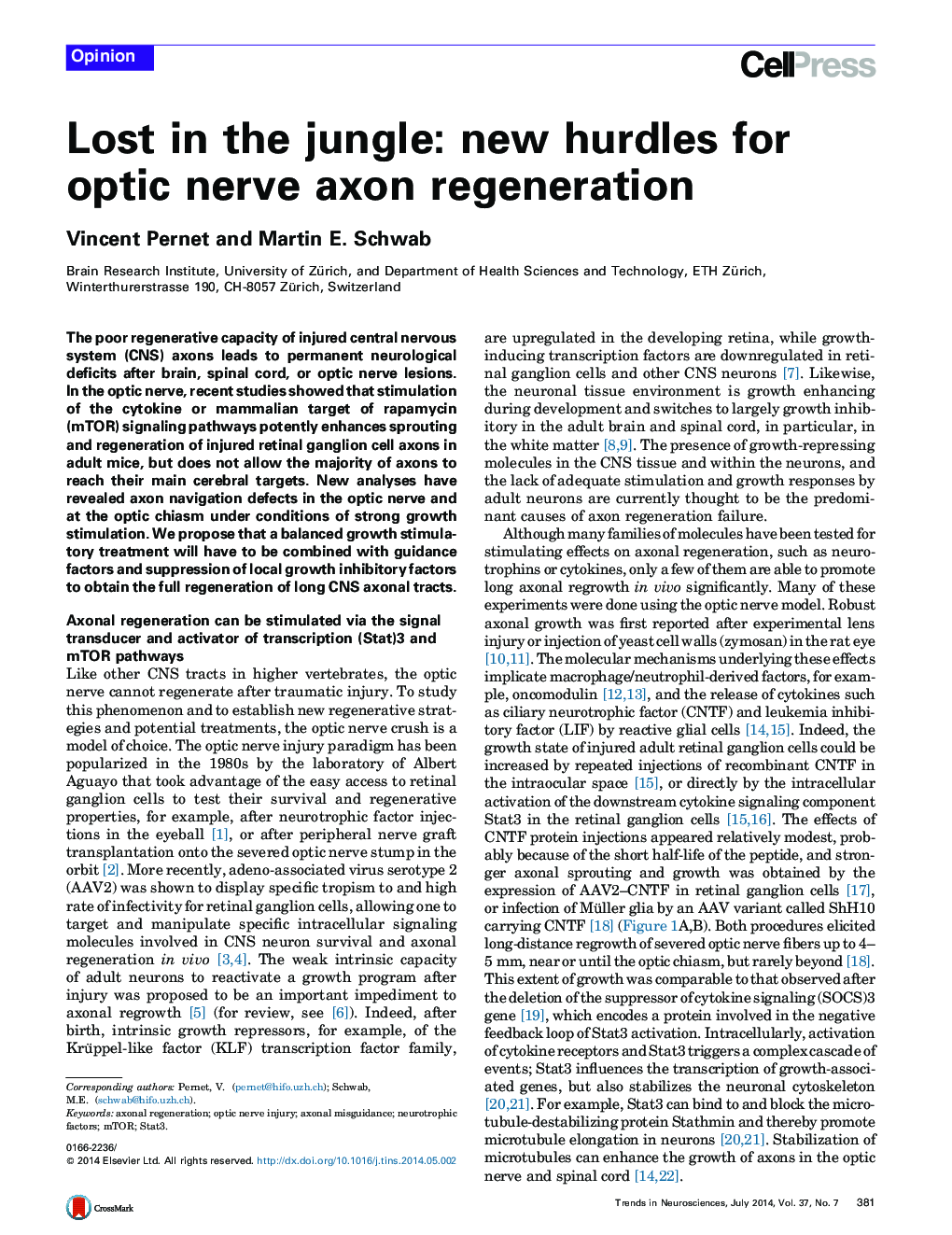| Article ID | Journal | Published Year | Pages | File Type |
|---|---|---|---|---|
| 4354265 | Trends in Neurosciences | 2014 | 7 Pages |
•The regeneration of long axons in the injured CNS is a ‘holy grail’ in neuroscience.•Strong axonal growth is promoted by modulating growth genes in injured neurons.•Complete axonal regeneration is still impossible in the optic nerve injury model.•Axonal misguidance may be a major limitation for long-distance axonal regeneration.•Balanced growth-promoting treatments and axonal guidance mechanisms are required.
The poor regenerative capacity of injured central nervous system (CNS) axons leads to permanent neurological deficits after brain, spinal cord, or optic nerve lesions. In the optic nerve, recent studies showed that stimulation of the cytokine or mammalian target of rapamycin (mTOR) signaling pathways potently enhances sprouting and regeneration of injured retinal ganglion cell axons in adult mice, but does not allow the majority of axons to reach their main cerebral targets. New analyses have revealed axon navigation defects in the optic nerve and at the optic chiasm under conditions of strong growth stimulation. We propose that a balanced growth stimulatory treatment will have to be combined with guidance factors and suppression of local growth inhibitory factors to obtain the full regeneration of long CNS axonal tracts.
